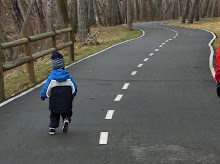The ball and chain was used both as a restraint against escape and a punishment. By various web accounts, the ball weighed between 12 and 30 pounds. Definitely not something anyone would want to drag behind them.
Is it at least partially a collectivist viewpoint to insist that government do what's good for the collective, or in the words from a comment on this post: what's good for "the health of Americans as a whole"? The commenter included a reason why:
most people are stupid and have blind trust in the government to save them fromThe net of this line of argument was that one reason government exists is to protect the health and presumably welfare of its citizens who are too stupid, inattentive, or lazy to protect their own health and welfare.
things that are bad because they don't have the time to look out for themselves
or just aren't smart enough to realize that they are killing themselves
Before slipping on that shackle, let me ask, how much protection is enough? Do you know all 4,000 federal laws, or those of you in Colorado, all 30,000 laws? At what cost are these laws created, and maintained? What services is the government providing us for the roughly 18% of our GDP they take? Is 18% enough of a ball and chain for our economy?
Going one step more, I've seen argued elsewhere that as gene-bearing animals, we are better at distributing our genes when we protect the "weaker" among us with social programs. If you must take this biologically based collectivist position ("tax one for the benefit of all") consider this: how much healthier a species we would be if every member of the herd was strong, healthy, independent, rational, and attentive to the world around themselves? Which collective is thriving best, the one with the resources of 1 in 5 people directed by government directive (force) to inefficient and wasteful programs, or the one with strong healthy individuals trading to meet their needs in a competitive free market?
That ball and chain is so tempting, because, after all, it's "free" money. It isn't free -- we pay for every penny of it and then some. Freedom for the individual is good for the health of the herd.
rootie
.jpg)
